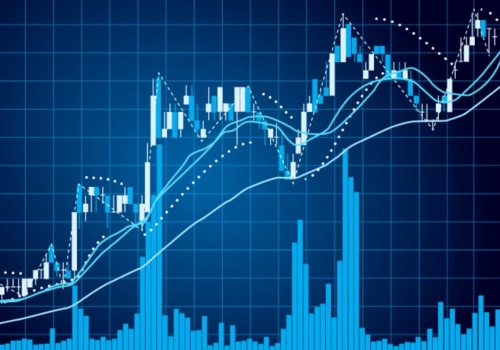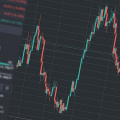In the fast-paced world of online trading, it is essential to have a sound risk management strategy in place. Using signals can be an effective way to manage risk and gain insights into the markets, but it is important to understand the importance of risk management when using signals. In this article, we will explore the risks associated with using signals and how to effectively manage them for successful trading. When it comes to forex trading, signals can be a powerful tool to help traders make more informed decisions. However, it is important to recognize that using signals carries its own risks that must be managed in order to maximize profits.
This article will cover the importance of risk management when using signals and provide strategies for proper risk management. The first step in risk management is to understand the signals that are being used. This includes understanding the types of signals being used, such as technical indicators or news-based signals, and the parameters of each signal. It is also important to understand the risks associated with each signal. For example, technical indicators can be subject to false readings, while news-based signals can be subject to unexpected events that can affect the market. Once a trader has a good understanding of the signals they are using, they can then move on to developing a sound risk management strategy.
A key component of any risk management strategy is setting limits. This includes setting limits on the amount of money that can be risked in each trade, as well as setting limits on the maximum drawdown that can be tolerated. Setting these limits helps to ensure that losses are kept to a minimum in the event that a trade goes against the trader’s expectations. Another important aspect of risk management is diversification. Diversification involves spreading out investments among different asset classes or different trading strategies.
This helps to reduce the risk of losses from a single trade or strategy, as losses in one area can be offset by gains in another. Finally, traders should also consider hedging when developing a risk management strategy. Hedging involves taking an offsetting position in order to reduce potential losses from a trade. For example, a trader may take a long position in a currency pair and then take a short position in another currency pair in order to hedge against potential losses from the long position. These are just some of the strategies that traders should consider when developing a risk management strategy when using signals. By understanding the risks associated with using signals and taking steps to properly manage those risks, traders can maximize their profits while minimizing their losses.
Diversification
When using signals in forex trading, it is important to recognize that there are risks associated with any type of trading.To mitigate these risks, it is important to diversify investments among different asset classes or trading strategies. Diversification is a risk management technique that involves spreading investments among different asset classes or strategies to reduce the potential risk of losses from any one trade or strategy. For example, a trader may choose to diversify their portfolio by trading different currency pairs, commodities, stocks, and other financial instruments. By diversifying, the trader can reduce the risk of losses from any one particular asset class or strategy.
Additionally, diversification can help to spread out the risk of losses across multiple asset classes and strategies, which can help to reduce the overall volatility of a portfolio. It is also important to remember that diversification does not guarantee profits. It is still possible for a trader to lose money on any given trade or strategy. However, diversifying investments can help to reduce the potential risk of losses by spreading out the risk across multiple asset classes and strategies.
Hedging
Hedging is a common risk management strategy that is used to reduce potential losses from a trade. It involves taking an offsetting position in order to minimize the impact of any potential losses.For example, if you are long on a currency pair and you expect it to go up, you could hedge your position by also taking a short position in the same currency pair. This way, if the price does not move in the direction you expected, you can offset some of your losses with gains from the short position. In other words, by hedging you are essentially protecting yourself against downside risk. It is important to note that hedging does not guarantee profits. The goal of hedging is to reduce potential losses, not to generate profits. Therefore, it is important to have a sound strategy in place before you begin hedging.
Setting Limits
Setting limits on money risked in each trade and on maximum drawdown is an important part of risk management when using signals.These limits help traders make sure that their losses are kept to a minimum and that their profits are maximized. By setting limits, traders can ensure that they never risk more than they are comfortable with and also that they are able to easily track their progress. When setting the limit for money risked in each trade, traders should be sure to select an amount that will not put their trading capital at risk. This amount should be based on the trader’s experience level and goals. For example, a beginner trader may want to start with a small amount, while an experienced trader may set a higher limit.
The maximum drawdown is the maximum amount of money that a trader can lose in a single trade. This amount should be set based on the trader’s trading capital and goals. For example, a trader with limited capital may want to set a lower maximum drawdown, while a trader with more capital may set a higher maximum drawdown. By setting limits on money risked in each trade and maximum drawdown, traders can ensure that their losses are kept to a minimum and that their profits are maximized. This can help traders become more successful in their trading strategies and also reduce their stress levels.
Understanding Signals
When it comes to forex trading, signals can be a powerful tool to help traders make more informed decisions.This section will explain why it is important for traders to understand the types of signals they are using and the parameters of each signal. Signal providers offer a variety of different types of signals, from simple entry and exit signals to more complex strategies that combine multiple types of signals. Each type of signal has its own benefits and drawbacks, and it is important for traders to understand how each type works in order to determine which one is best suited to their trading style and risk profile. Additionally, it is important for traders to be aware of the parameters associated with each signal type so that they can adjust their strategies accordingly. For example, some signals may be triggered when certain market conditions are met, such as when a currency pair moves above or below a certain price level. Other signals may be triggered by news events or other economic data releases.
By understanding what triggers each signal, traders can better prepare themselves for potential market movements and adjust their trading strategies accordingly. It is also important for traders to understand the potential risks associated with each signal type. For example, some signals may be more volatile than others, and thus carry a higher level of risk. Additionally, some signals may be more reliable than others, meaning that they may provide more accurate predictions about future market movements but may also come with a higher level of risk. By understanding the potential risks associated with each signal type, traders can better manage their risks and maximize their profits. In conclusion, it is important for traders to understand the risks associated with using signals and develop a sound risk management strategy in order to maximize profits and minimize losses.
By following strategies such as understanding signals, setting limits, diversification and hedging, traders can ensure that their trades are more profitable over time.












Leave Reply